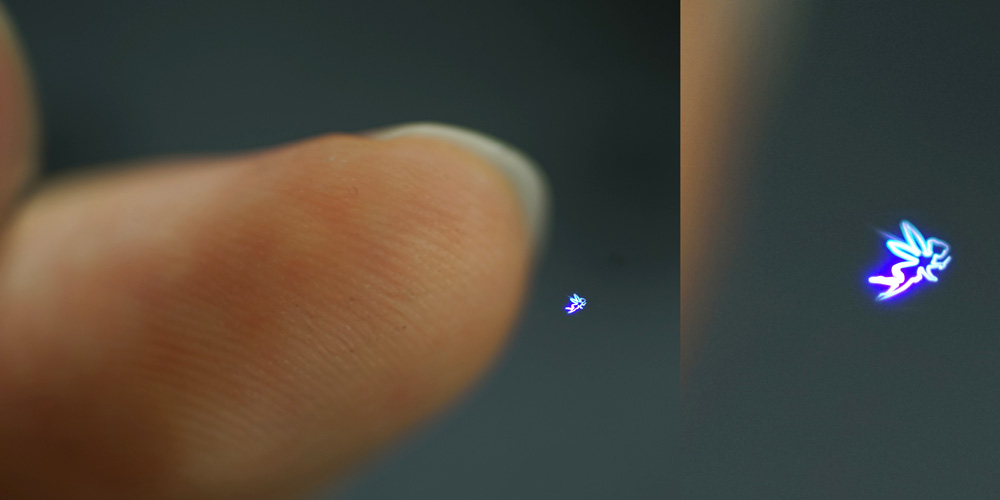Honorary Mention
How can our imagination be materialized? From the dawn of humanity, imagination has been expressed in two ways: via images by employing drawn images and motion pictures to form the protons for our eyes, and via sculptures by fabricating statues and installations to materialize three-dimensional objects in the real world. In this project we explore the different methods to express our imagination via holographic synthesis on light fields. These light fields have been used as components of motion pictures for TV, movies, and Computer Graphics. We aimed to update these field quantities towards three-dimensional computational controlled matter.
In the art & science project Fairy Lights in Femtoseconds, compositions of light field technologies that use laser-induced plasma 30 femtoseconds ultra short pulse laser are created. New artificial matter becomes tangible and visible new material. This project proposes a method of rendering aerial and volumetric graphics with computationally controlled femtosecond lasers. A high-intensity laser excites a physical matter to emit light at an arbitrary 3D position and it excites in an ultra short time period. Artistic applications can then be explored, especially since plasma induced by a femtosecond laser is safer than that generated by a nanosecond laser employed in conventional approaches.
We believe this project will melt the borders between matter and images. Moreover, tangibility, invisibility, and malleability are essential for digital societies and update our concept of matter.
Yoichi Ochiai (JP)
Yoichi Ochiai (JP), born in 1987, is a media artist and assistant professor of University of Tsukuba and Head of its Digital Nature Group. He holds a PhD in Applied Computer Science from the University of Tokyo. He works on new inventions and research through a mixture of applied physics, computer science, and art. He has a strong interest in post-pixel multimedia and conducting research towards his vision called Digital Nature an alternative perspective of nature and humanity in the post ubiquitous computing era. He has received the Innovative Technologies Prize from METI Japan, the World Technology Award from WTN, and many more.
Project credits
Realized within the Digital Nature Group at University of Tsukuba and Utsunomiya University
Coauthors of the project research paper: Kota Kumagai, Takayuki Hoshi, Jun Rekimoto, Satoshi Hasegawa, and Yoshio Hayasaki.



